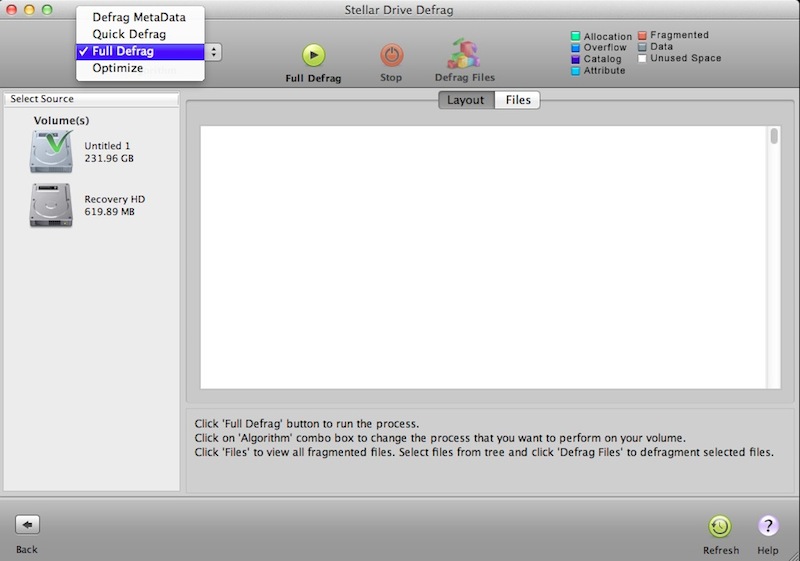

If fragmentation does occur, the operating systems try to move files around to accommodate.

This leaves room for files to grow and to create new files. Instead of placing multiple files near one another on the disk, they try to scatter those files in different places. macOS and Linux handle file storage a little differently. It’s how their file systems handle it that’s important. That’s fragmentation.Īll operating systems suffer some level of fragmentation. When your operating system writes a new file to the disk (or when a file grows in size), part of that file might go into one available space and part into another. Delete more things, and you have more available space in bits and pieces scattered across your hard drive. Put simply, when you delete a file from your hard drive, the space that file took up is marked as available.
Defrag software for mac windows#
Modern hard drives are faster, modern systems have more memory, and Windows now defaults to using the NTFS file system-all of which reduce the need for defragmenting on traditional hard drives. On top of that, if you have such a drive, Windows Vista, 7, 8, and ten all perform automatic defragmentation during as part of their regularly scheduled maintenance, so you don’t even have to worry about doing it yourself. What we’re talking about here are traditional hard drives with spinning platters.Įven on Windows, defragmentation is not as big a deal as it was in the past.

You don’t need to defragment solid-state drives (in fact, most operating systems won’t even let you). So What is Defragmenting, and Why Does Windows Need It?įirst up, let’s get this out of the way.


 0 kommentar(er)
0 kommentar(er)
